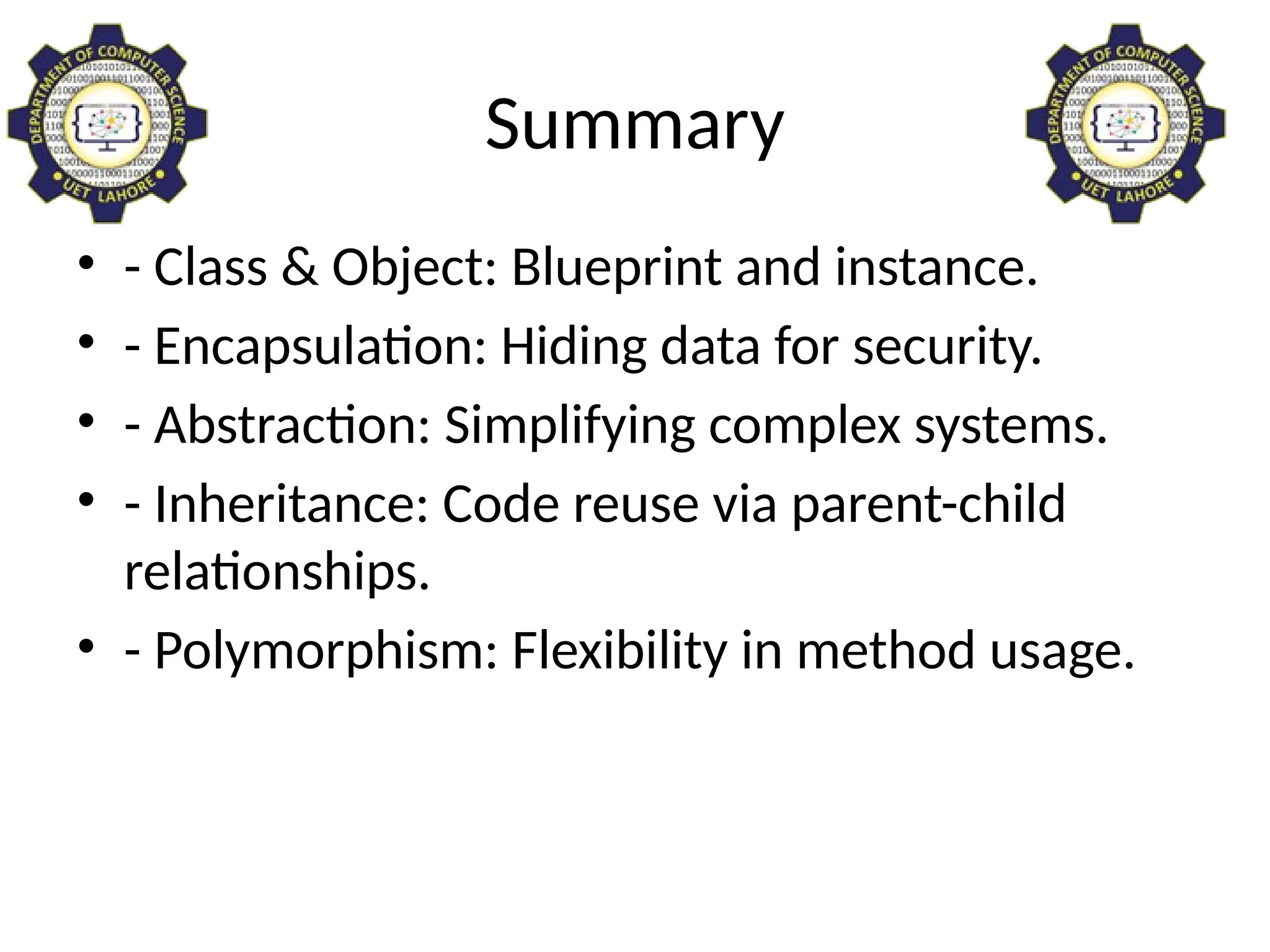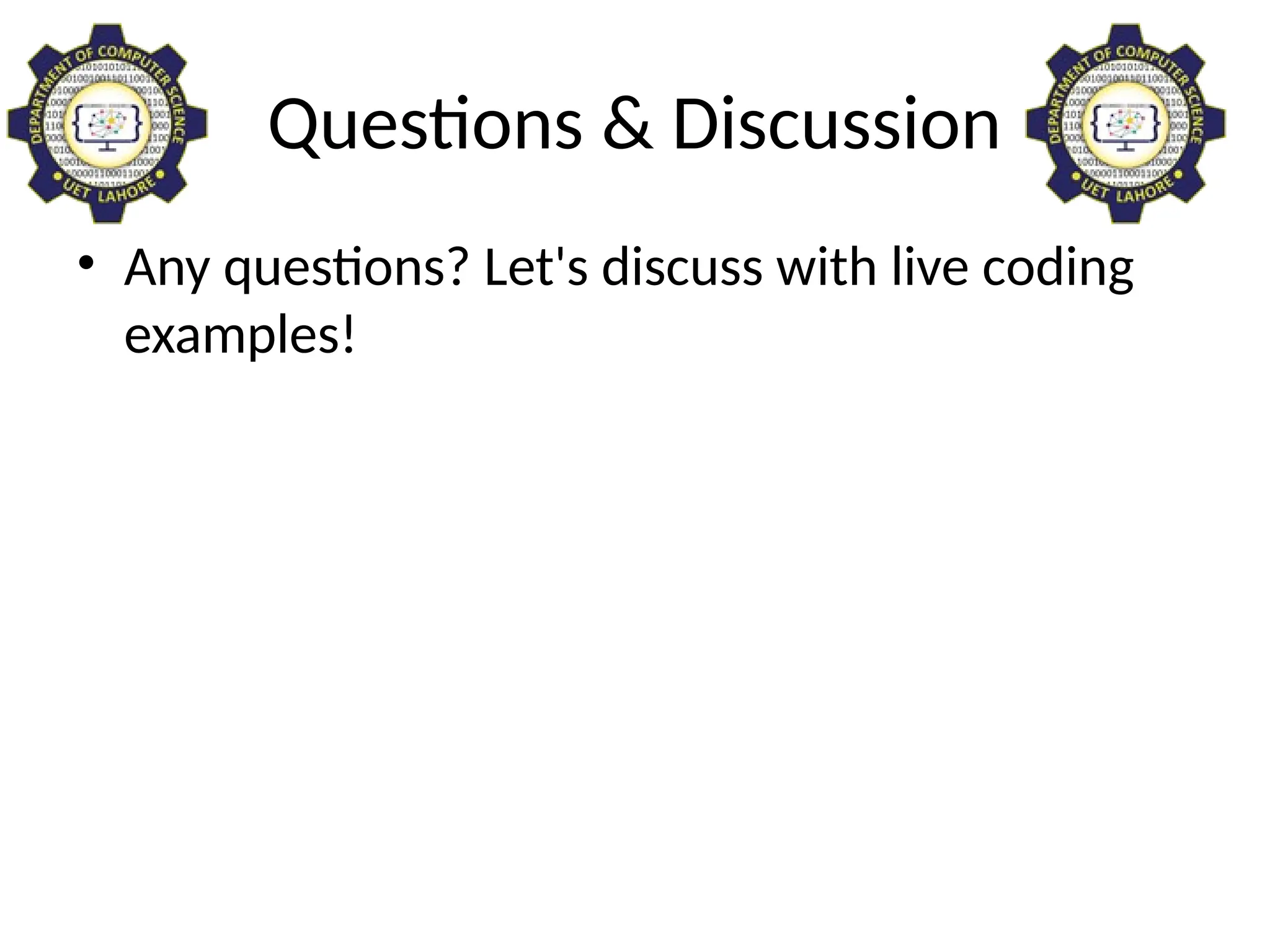Object-Oriented Programming (OOP) is a programming paradigm that uses objects and classes.
Helps in structuring the code for reusability, modularity, and scalability.
Python supports OOP along with procedural and functional programming.
Slide 2: Key Concepts of OOP
Class - Blueprint for creating objects.
Object - An instance of a class.
Encapsulation - Restricting direct access to some data.
Abstraction - Hiding complex implementation details.
Inheritance - Deriving new classes from existing ones.
Polymorphism - Ability to take multiple forms (method overriding and overloading).
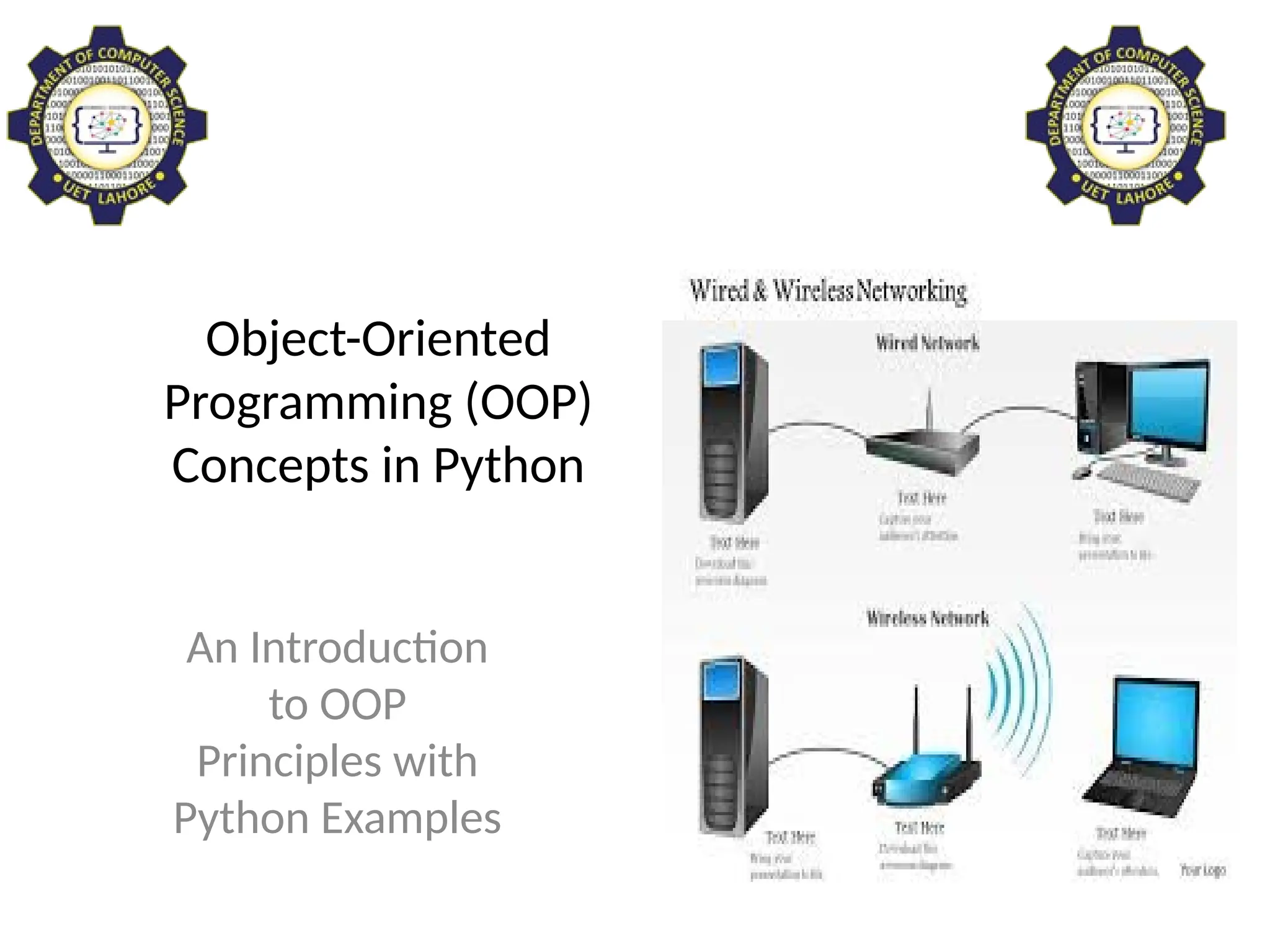
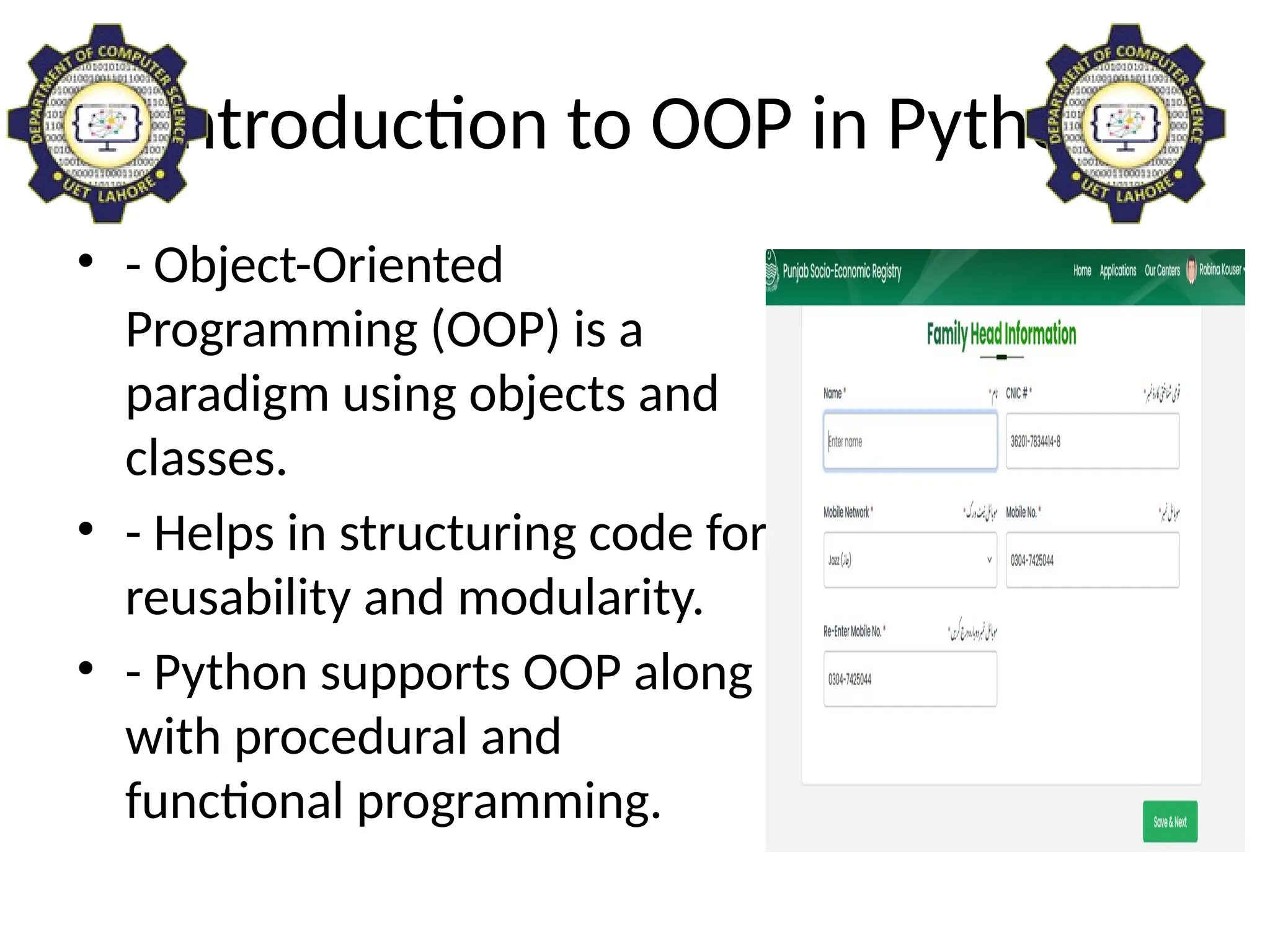
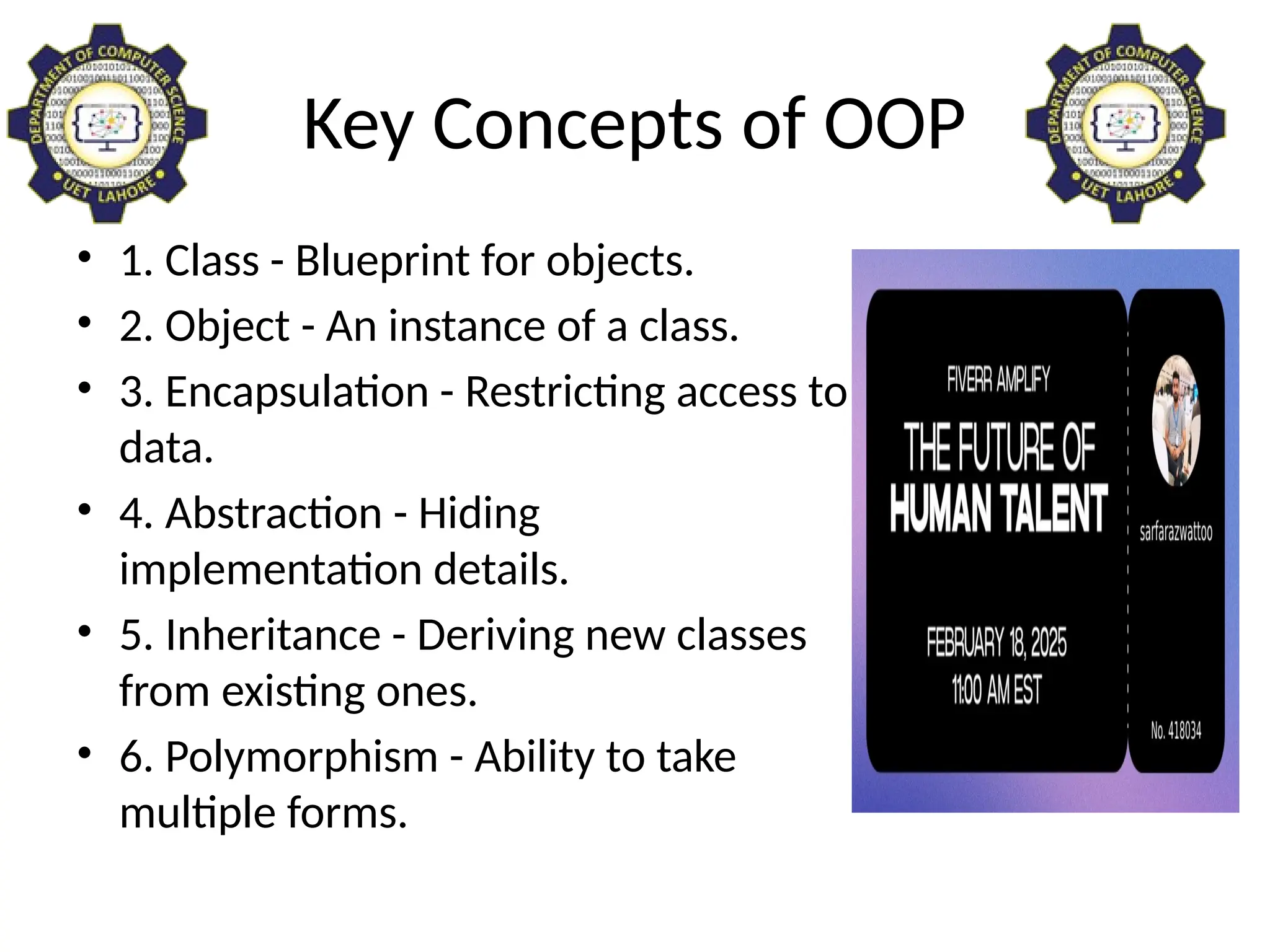
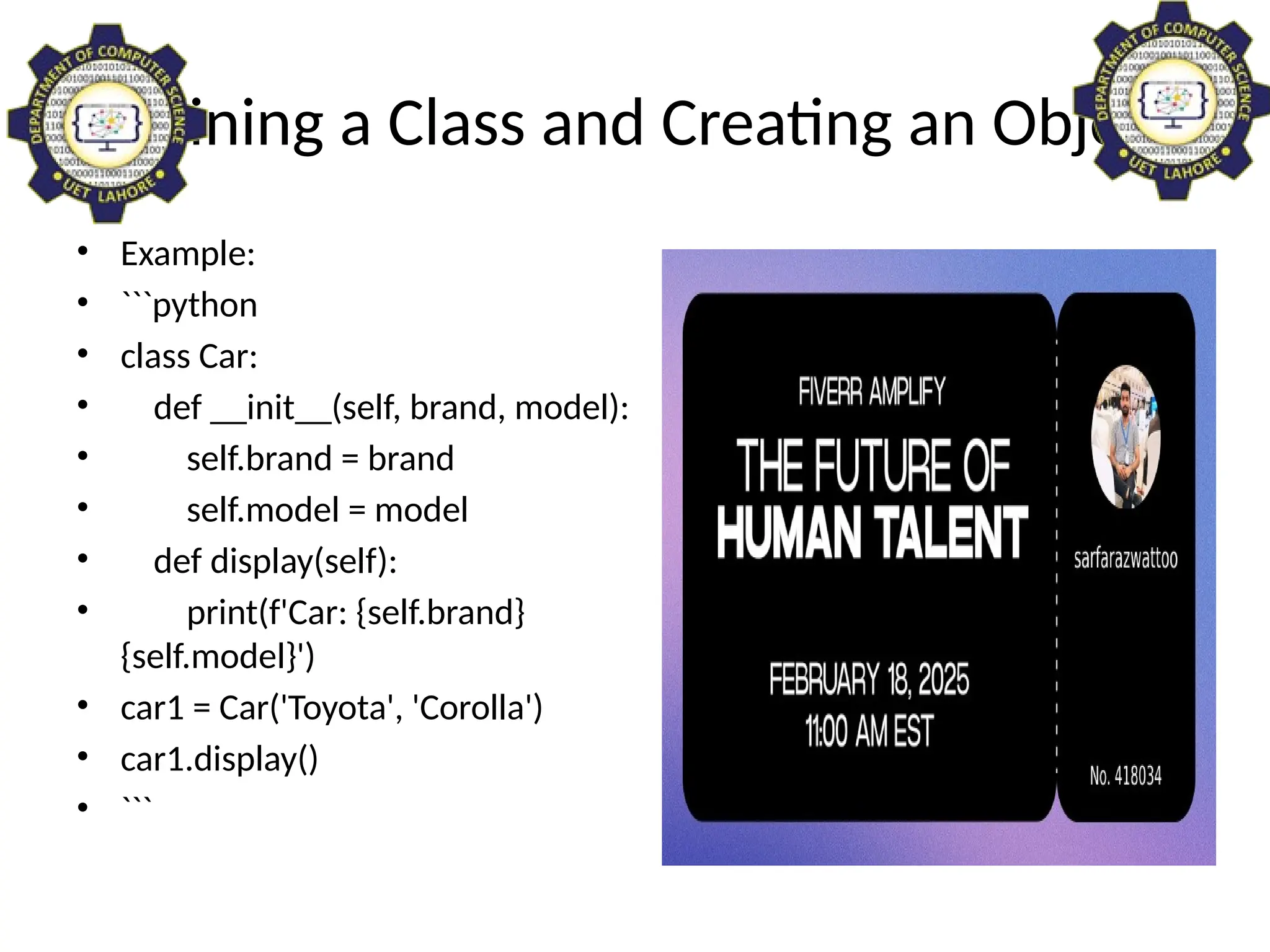
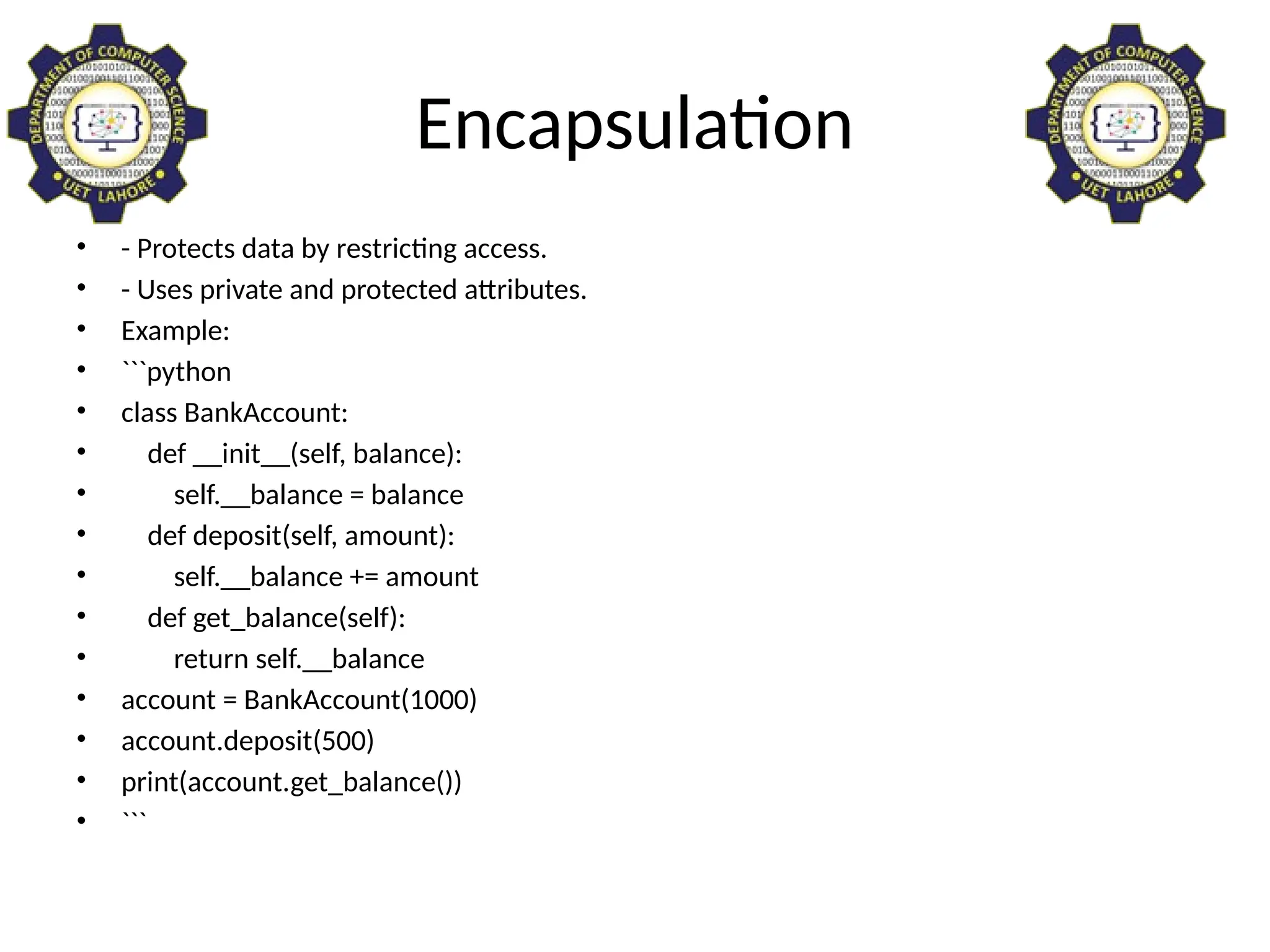
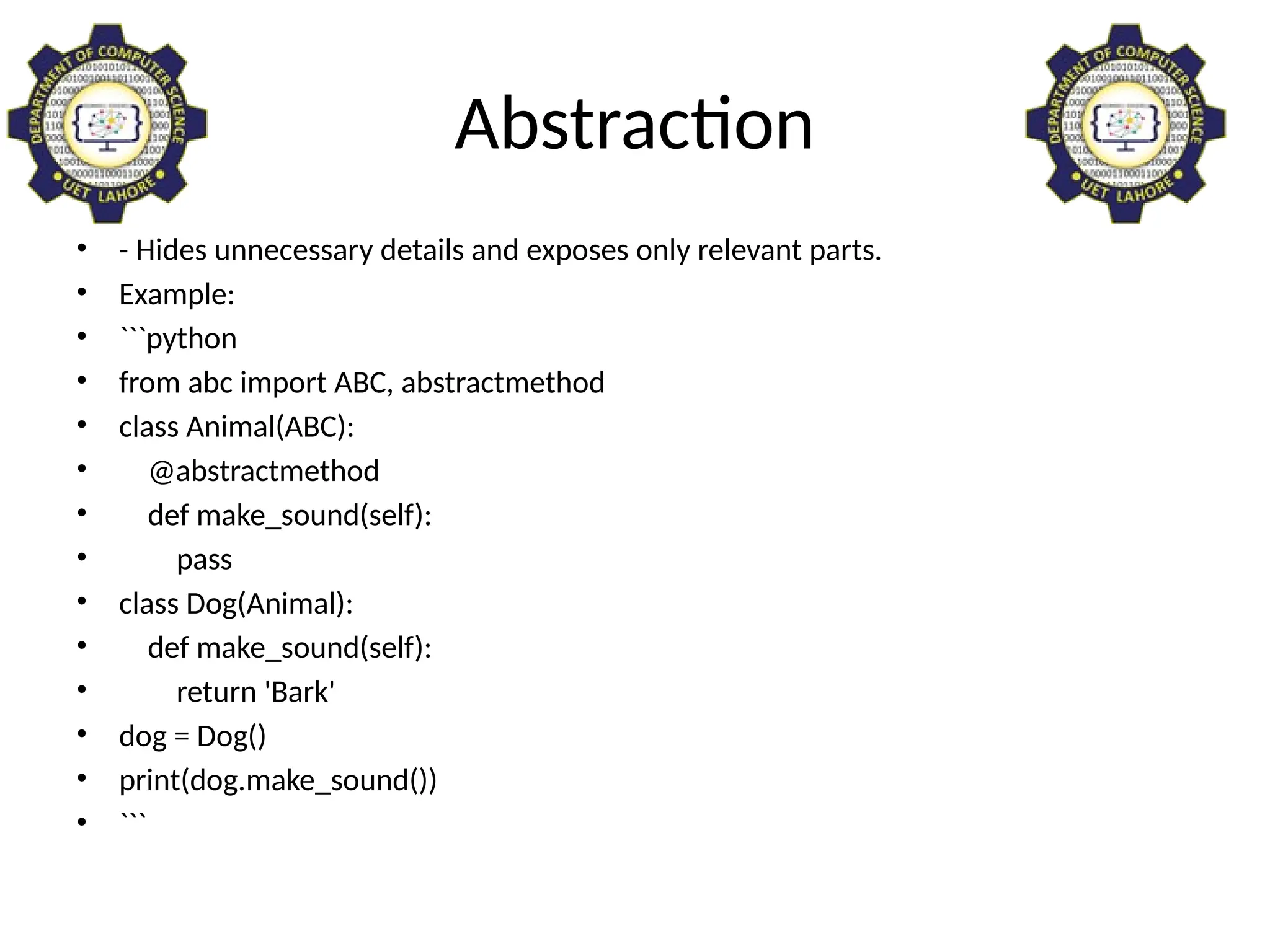
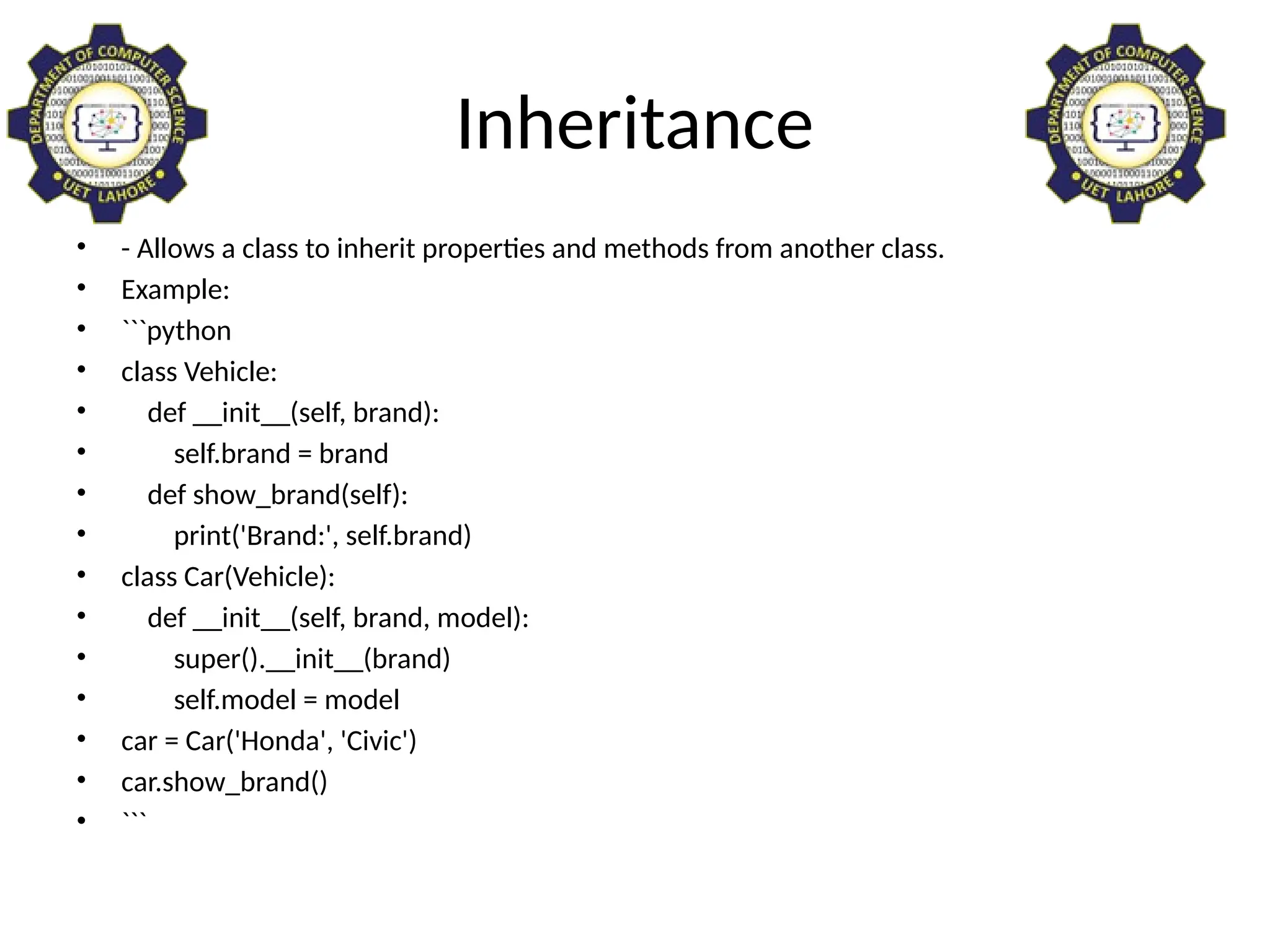
![Polymorphism
• - Allows methods to be used interchangeably between different classes.
• Example:
• ```python
• class Bird:
• def sound(self):
• return 'Some bird sound'
• class Sparrow(Bird):
• def sound(self):
• return 'Chirp'
• birds = [Sparrow(), Bird()]
• for bird in birds:
• print(bird.sound())
• ```](https://image.slidesharecdn.com/oopconceptspythonwithcoderefrences-250304070943-10cb6925/75/OOP-Concepts-Python-with-code-refrences-pptx-8-2048.jpg)
